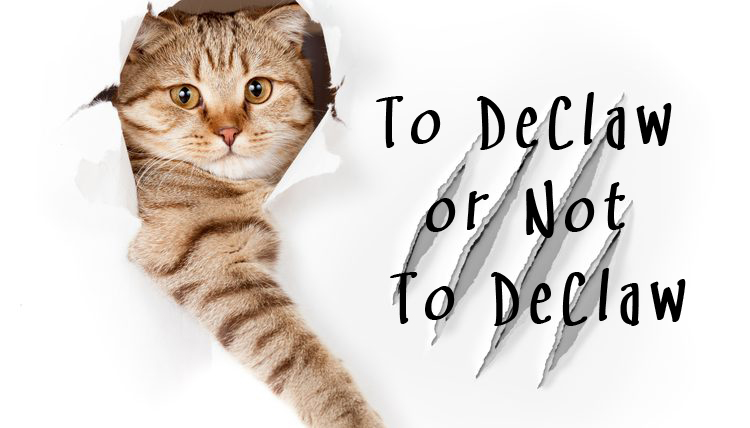Tame nail-trimming fears – Pet owners may be more apprehensive about cutting dark-colored nails because it’s more difficult to see the blood vessel in the center of the nail. Patience, the right tools and practice can make nail grooming easier.
Tame nail-trimming fears
Trimming pets’ nails can test the nerves of pet owners, who might be worried they will cut too much nail off or hurt their dogs or cats. Long nails can be a nuisance for pets and may hamper their abilities to get around comfortably. To help maintain a consistent nail-trimming schedule, pet owners can practice ways to keep calm and apply techniques to make nail grooming easier on the pet.

The first step to making nail trimming a calm and comfortable experience is to understand the anatomy of your pet’s paws and nails. Dogs’ nails remain extended beyond the pads of the toes, while cats’ nails retract back into the folds of the toes. In both cats and dogs, nerve endings and blood vessels called “the quick” lie within the center of the hard nail. The quick is easier to see in animals with light-colored nails. It can be harder to distinguish in dark-nailed pets. If you trim too close to the quick, it can be painful for your pet and cause bleeding if nicked. This is why many pet owners are apprehensive about trimming nails on their own. However, the longer the nails are left to grow, the further down the quick will extend.
Some pets are amenable to nail trimming, while others may fear the clippers or simply do not like having their paws handled. It may take time, but pet owners can work with their companion animals to assuage fears and make nail trimming go more easily.
The Humane Society of the United States says trimming pets’ nails every few weeks is an important part of maintaining their health and can protect family and visitors from scratches. Before attempting to trim pets’ nails, pet owners should acclimate their pets to being handled. Begin by practicing touching the paws and nails. Reward pets for jobs well done with small food treats or other incentives. Eventually progress to touching the feet with the trimmer.
A tired or distracted pet can be easier to handle. According to dog-training expert Cesar Millan, dogs that are especially anxious or wired may need to get tired out before a nail-trimming session. Millan suggests an exercise like swimming to relax tense and anxious pets. A pet that’s especially anxious or fearful may only be able to tolerate trimming one nail per day.
Sometimes it can be helpful to trim pet nails with a buddy. One person can take care of the nails, while the other reassures the pet with soothing tones and caresses. Larger dogs may require two people for the job simply because the animal may be too large to wrangle on your own.
The right tools of the trade also can make a difference when trimming nails. Nail trimmers come in a few varieties. Many have a scissoring action that brings two blades together to cut off the nail. Another type is like a miniature guillotine. The pet’s nail is placed within a hole in the tool, and one blade comes down to shear off the nail. Newer nail trimmers employ a sanding or grinding action to wear away the pet’s nail without actually cutting. Some cat owners use human nail clippers or small scissors to cut cat nails, which tend to be thinner and softer than dogs’ nails. Ultimately, find a tool your pets finds comfortable and one you can handle properly.
Keep a container of nail styptic powder at the ready just in case you do happen to cut a little too low and cause bleeding. In a pinch, Wahl pet product manufacturer suggests using corn starch, rubbing a clean, scent-free bar of soap across the nail, or even applying ice to slow down the bleeding. If bleeding cannot be controlled after 20 to 30 minutes, proper clotting is not taking place and a veterinarian should be consulted immediately.
Pets owners especially worried about nail trimming can leave the task to a professional groomer or veterinarian.
Article compliments of MetroCreative. PE154089
About the Author
Discover more from Courageous Christian Father
Subscribe to get the latest posts sent to your email.



